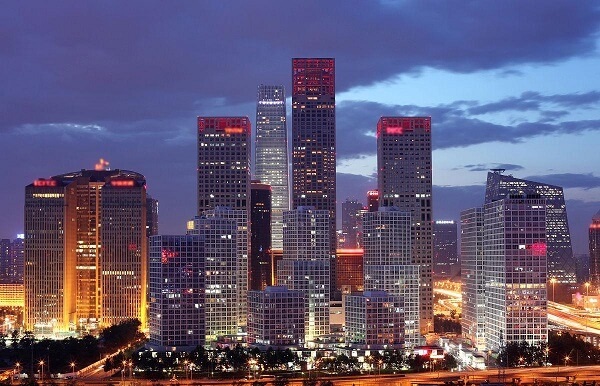在南京,位于秦淮区朝天宫街道的石榴新村,曾是与繁华的“中华第一商圈”新街口商圈毗邻的老旧社区。这片区域的房屋多始建于上世纪50年代,随着时间的推移,私搭乱建使得其成为了一片面积小、密度大、卫生条件差、安全隐患多的城中村,长期困扰着当地政府。然而,通过一系列创新的城市更新模式,石榴新村正迎来“新”生,解除了老城区的“心病”。
#### 解决之道:城市更新模式“破题”
针对石榴新村的改造难题,南京市决定尝试以原地重建、回迁安置为主,结合异地置换、货币回购、优先购买原地商用房屋的复合城市更新模式。这一模式旨在有效破解老旧散片区改造及城中村危旧房改造的难题,通过安全消险治理专项方案,对石榴新村的房屋进行鉴定和安全治理。
#### 居民心结:“善解”之道
在新模式的实施过程中,居民们面对原地回迁的方案,起初多有疑虑。为了解除居民的顾虑,项目组成立了城市更新改造委员会,通过召开居民议事会、设立现场常驻服务、开展“领导接待日”、利用党群服务中心等方式,广泛听取居民意见,帮助他们了解政策细节。此外,还成立了“多元化矛盾协调小组”,为居民提供包括婚姻问题咨询、继承公证办理、矛盾纠纷调解等全方位服务,确保改造过程的和谐进行。
#### 挑战与解决:疑难杂症求“多解”
改造过程中,面对老城区的特殊环境限制,如老城限高等,项目组创新性地采取了多管齐下的策略,既尊重历史环境的保护,又满足居民对居住条件改善的需求。通过优化设计、严格施工标准、强化安全措施,确保改造后的石榴新村不仅环境优美、设施完善,还能有效提升居民的生活质量,与周边现代化的城市风貌和谐共存。
石榴新村的改造实践,不仅展示了南京在城市更新领域的创新探索,更为其他面临类似挑战的老旧城区提供了宝贵的经验。通过科学规划、居民参与、多方协调,南京正以实际行动,为老城区的“心病”开出“新解”,推动城市在现代化进程中实现可持续发展。
### 结语
随着南京石榴新村的归来记,这一老城区的“心病”找到了新的解决方案。通过城市更新模式的创新、居民参与的深入、以及对历史环境的尊重,南京在现代化与传统保护之间找到了平衡点,为城市可持续发展树立了典范。石榴新村的变迁,不仅是一次物理空间的更新,更是一次人心与社会和谐的重构,展示了城市在新时代背景下的新风貌与新希望。
英语如下:
### “Renovation in Ancient Nanjing District: The Transformation of Liu Tao New Village Resolves the Woes of Residents”
In the bustling city of Nanjing, the Liu Tao New Village, nestled in the historic core of the Qiantang Street district, was once a neighborhood adjacent to the vibrant Xinjiekou business district. Built predominantly in the 1950s, the area was characterized by narrow streets, high population density, poor sanitation, and numerous safety concerns, all exacerbated by illegal and chaotic construction. This made it a longstanding challenge for local authorities.
However, through a series of innovative urban renewal strategies, Liu Tao New Village is undergoing a metamorphosis, addressing the deep-rooted issues of the old urban area.
#### A New Approach to the Old Problem: Urban Renewal with a Twist
Facing the complexities of renovating an old, fragmented district and a dangerous urban village, Nanjing opted for a multifaceted approach. This included a combination of in-place reconstruction with resident resettlement, alongside alternative relocation, monetary repurchase, and priority purchase of commercial properties. This innovative model aims to effectively tackle the challenges of renovating old, scattered areas and dangerous, old housing. By implementing a specialized safety management plan, the houses in Liu Tao New Village are being thoroughly inspected and treated for safety concerns.
#### Resolving the Anxieties of the Residents: A Community-Oriented Solution
Initially, the proposal of in-place resettlement raised concerns among the residents. To alleviate these fears, a City Renewal and Transformation Committee was established, engaging in regular community meetings, setting up on-site service stations, organizing “leaders’ reception days,” and utilizing community party service centers to gather residents’ opinions and clarify the policy details. Additionally, a “diversified conflict resolution team” was set up to offer a wide range of services, including marriage counseling, inheritance notarization, and dispute mediation, ensuring a harmonious process.
#### Navigating the Challenges: A Comprehensive Strategy
In the face of unique environmental constraints, such as height restrictions in the old city, the project team adopted a multi-pronged strategy that respects historical preservation while addressing the need for improved living conditions. By refining designs, adhering to strict construction standards, and enhancing safety measures, the renovated Liu Tao New Village not only boasts a beautiful environment and comprehensive facilities but also significantly boosts the quality of life for its residents, integrating seamlessly with the surrounding modern urban landscape.
The Liu Tao New Village transformation project showcases Nanjing’s pioneering exploration in urban renewal, providing valuable lessons for other cities grappling with similar challenges. By integrating scientific planning, community engagement, and multi-stakeholder coordination, Nanjing is actively addressing the “heart disease” of old urban areas, promoting sustainable development as the city advances into the modern era.
### Conclusion
The return story of Liu Tao New Village in Nanjing not only presents a new solution to the old problems but also embodies the city’s innovative approach in balancing modernization with heritage protection. Through a blend of urban renewal strategies, deep community involvement, and respect for historical environments, Nanjing is setting a precedent for sustainable urban development. The transformation of Liu Tao New Village is more than a physical space rejuvenation; it is a reconfiguration of hearts and social harmony, illustrating the new landscape and hope of the city in the era of new challenges.
【来源】http://www.chinanews.com/sh/2024/07-27/10258694.shtml
Views: 1
